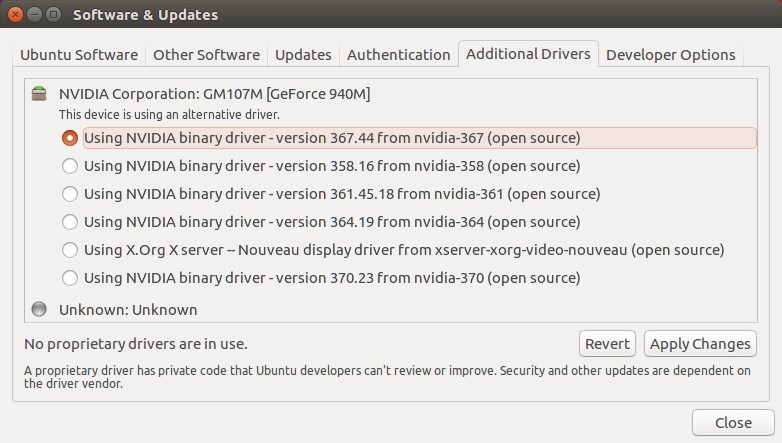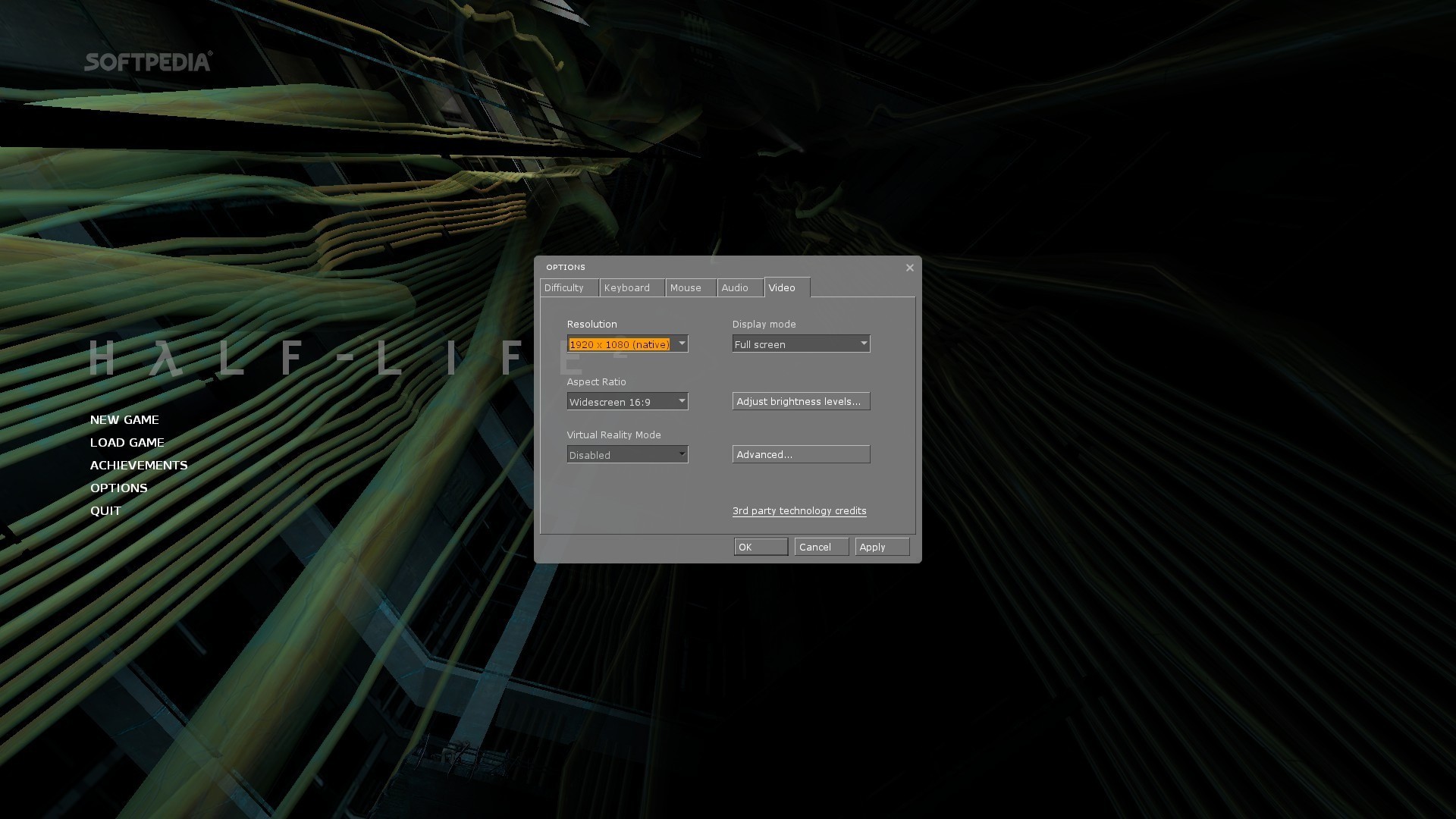Unlike Windows, Nvidia drivers for Linux desktops are quite hard to come by, and installing the latest drivers on your Linux desktop can be quite an arduous process. Fortunately for Linux users, there are the third party graphics drivers PPA which keeps an updated Nvidia driver for installation. This tutorial will be showing you 2 ways to install Nvidia graphics card driver on Ubuntu 18.04.The first method uses graphical user interface (GUI); The second method is done from the command line interface (CLI). And alternatively, from terminal, install nvidia-331 (for v331), nvidia-337 (for v337) or nvidia-current (for very recent version). After installing, don't forget to logout or reboot, and log back in. Despite its name, the PPA only provides proprietary Nvidia graphics drivers updates, with no support for AMD or Intel. Even though the PPA is probably the most stable way of upgrading to the latest proprietary Nvidia drivers version in Ubuntu or Linux Mint, it's still considered in testing.
This tutorial will help you to install the Latest stable version of NVIDIA driver 390.77 On Ubuntu 18.04 LTS and LinuxMint. Nvidia Display Driver is a proprietary, yet freely distributed OpenGL video driver that aims to offer support for Nvidia graphics cards on any Linux kernel-based operating system. Unlike Windows, Nvidia drivers for Linux desktops are quite hard to come by, and installing the latest drivers on your Linux desktop can be quite an arduous process. Fortunately for Linux users, there are the third party graphics drivers PPA which keeps an updated Nvidia driver for installation.
Updated: December 5, 2012
This is NOT a trivial topic. In all past releases of Ubuntu, the Additional Drivers window would pop up, you would select the desired driver, Activate it, wait a few minutes till it's configured, then reboot. Job done. Not so anymore in Quantal Quetzal.
I have already elaborated on the steps needed to properly configure Nvidia drivers in Ubuntu 12.10, but a dedicated tutorial is required. Please follow me, as this will save you from grief, frustration, problems, and maybe even from having systems that won't boot. The emphasis is on maybe. But do read on, please.
Step 1: Additional drivers problem
You might be tempted to look for Jockey. This is the name of the program that offers additional drivers. It is no longer installed by default in Ubuntu. You will have to install it through the Software Center.
Once it is installed, it will not show in the Dash for some reason, another Ubuntu bug.
You can find the program by opening the command-line and running jockey-kde. This will fire up the utility you expect to see and use.
You might be tempted to use this program to install the drivers now. Do NOT. You will end up with an unbootable system, as elaborated in my review. Nouveau will be unloaded from memory, Nvidia drivers will not be loaded, and you will not be able to fall back to a rescue session, because Ubuntu has none, since it's all Unity 3D shit now.

You can also try the Additional Drivers functionality via the Ubuntu Software Center, but the results will be identical. In other words, no matter which course of action you choose with these automated tools, you will not succeed. Oh, the image shows a system with Nvidia drivers running, but that's only AFTER following the manual method below.
Step 2: Manually configure drivers
Rather than having to do this after your machine ends up with a half-working desktop, you can do this before any damage is caused. Hint, if you've already botched, then Ctrl + Alt + F1 to reach the first virtual console. Log in there, then follow the instructions.
In the past, running apt-get install build-essential was enough. This would get all the relevant stuff, including the kernel sources and kernel headers. Now, you must specify these separately.
sudo apt-get install build-essential linux-source linux-headers
If the transitional package linux-headers is not available, instead, please try running the command by specifying the exact version of the headers with:
sudo apt-get install linux-headers-`uname -r`
And this should work. Of course, it only magnifies the feces level of the latest Ubuntu release, but it could help you sort things out. Next, install the current Nvidia driver:
sudo apt-get install nvidia-current
If you skip the part where you install the sources, headers and the rest, you will see the following error message:
Processing triggers for initramfs-tools ...
update-initramfs: Generating /boot/initrd.img-3.5.0-17-generic
2012-10-30 13:37:19,611 WARNING: modinfo for module nvidia_current failed: ERROR: modinfo: could not find module nvidia_current
2012-10-30 13:37:19,611 WARNING: /sys/module/nvidia_current/drivers does not exist, cannot rebind nvidia_current driver
Once the installation completes successfully, check if the Nvidia driver is loaded:
sudo /sbin/lsmod | grep nvidia
If it's not, you will need to manually insert into memory. First, make sure all kernel module dependencies are satisfied and resolved:
sudo depmod -a
Then, load the driver:
sudo modprobe nvidia_current
This should succeed and the lsmod command should show it's loaded, but the usage count will probably be 0, because nothing will be using it yet. You will need to restart the graphics environment to actually benefit from the driver:

sudo /etc/init.d/lightdm restart
This will restart the graphics environment, you will see the Nvidia splash, and you will load into a desktop that has the nvidia driver running, and all that. Your problem is now resolved. For the skeptics among you, you can reboot to verify. Although there's really no need for that. Linux is flexible enough to setup drivers without having to restart the system.
Warning!
Not guaranteed to succeed, mind you. See my review for more drama. As a side note, on Pangolin, everything works superbly, flawlessly, using the standard method, and even with the latest Driver 310 Beta, which supposedly improves the performance by many tens of percents, as much as doubling the figures, although we will be testing that soon. Here's a humble set of screenshots from Ubuntu 12.04, which you should be using and not Quetzal, by the way:
Plus reduced memory usage:
More reading
You might also be interested in these other related articles and guides:
Highly useful Linux commands & configurations, an oldie but goodie
Ubuntu Pangolin review and Nvidia performance article (solved by 310 driver)
Install Nvidia Drivers Ubuntu 12.04
Conclusion
There's no need to repeat the magnitude of crap caused by the latest Ubuntu release, as it's self-evident from the vast number of bugs and annoyances and stupid things and regressions and all the rest. For me, the big one is the Nvidia issue. Kind of makes you wonder about the whole thing, and how we expect Steam to work out miracles on Linux, but surely not when you have to fight for your graphical survival.
Anyhow, politics and such aside, this tutorial teaches you how to install Nvidia drivers in Quantal Quetzal, how to overcome the problems with failed driver compilation or rescue unbootable systems. Some command line, some pure Linux work, not a bad thing.
Have fun, and stay away from Ubuntu 12.10 if you can.
Install Nvidia Drivers Ubuntu 18.10
Cheers.